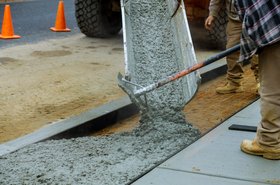With 2022 in the rearview mirror, many are surveying the havoc heaped upon them by the continuing supply chain issues, inflation, and the massive layoffs by tech companies. Others are still waiting for 5G to fulfill its promise and for the Edge to take off. Yes, there were some problems in 2022, but on the whole, we are still blessed to be in an industry that thrived during the peak of the pandemic and is still the foundation of our economy.
In my 2022 predictions, I managed to win a game of buzzword bingo by using the term metaverse in three different predictions. Did the metaverse impact data center design? Did nuclear power make headway as a carbon-free power source? Did 5G start to live up to the hype? Read on and see for yourself as I grade my fearless prognostications from 2022.
Nuclear power makes headway as carbon-free power option
Grade: A+
On some levels, this prediction was aspirational as we are running out of time and not making enough progress in reducing our carbon emissions. That said, there are a lot more people talking about nuclear power as an option now than there was back in January 2022. I have had several conversations about nuclear power with Tony Grayson of Compass Quantum, who knows a lot about the topic from his days in Navy nukes and his continued research on the topic. Tony and I agree that we foresee the data center market entering into Power Purchase Agreements (PPAs) rather than operating the reactors themselves.
I am not talking about your father’s – or grandfather’s – nuclear power plants. Gone are the days of the multi-gigawatt bespoke designs of the past that consistently doubled their initial price and schedule. Nuclear has taken the modular approach that has become the norm in the data center industry with NuScale Power and Rolls-Royce leading the way.
As I said in my original prediction, this isn’t going to happen overnight, but the conversation became more mainstream this year. As another data point, I just did a Google search for “nuclear power data centers” and got 249,000,000 search engine results pages (SERPs), so I’ll take the A. Keep an eye out for a more refined prediction for 2023.
The metaverse will begin to impact data center design
Grade: A
This prediction was saved by my own procrastination, as it was my intent to have this blog written by mid-December. If I had accomplished my goal, rather than writing over the holidays, the news would not yet have broken that Meta was rescoping several projects as it shifts to AI-focused data centers. "Supporting AI workloads at scale requires a different type of data center than those built to support our regular online services," Meta's Nordics comms manager Peter Münster told DCD.
The thinking on this prediction was based on my assumption that a great deal of the metaverse will be built on some kind of an AI platform. Based on my knowledge of artificial intelligence (AI) which, granted, is very limited the clusters are often similar to supercomputers. Supercomputing data centers are rarely designed in the same configurations as more commercial data centers.
Prior to this announcement from Meta, I had no evidence to give myself even a passing grade. So, I’ll take the A with a huge assist from holiday procrastination.
The metaverse will not have an impact on Edge computing…yet
Grade: A
In hindsight, this one probably wasn’t a big stretch to predict. My thinking was simply that the metaverse would not develop enough in 2022 to have any measurable impact on the Edge computing sector. Given that the biggest news stories I’ve been able to uncover on the metaverse are that the first virtual hotel opened in the metaverse and that avatars now have legs, I am going to say I was right.
I continue to think that as the metaverse matures, it will have a massive impact on Edge computing. But that most definitely didn’t happen in 2022.
5G starts to live up to the hype
Grade: F
This is where my grades start to take a nosedive, similar to high school when I left the math and science part of the school and stumbled into the history and English areas. I made this prediction because of the turn up of the new C-band/Mid-band 5G. Some were calling this the ‘Goldilocks’ band for its ability to travel long distances, penetrate structures, and deliver faster connections. Although it doesn’t measure up to the promise of millimeter wavelength, it was said it could deliver speeds up to 10 times faster.
I believed this substantially upgraded speed, or so it was promised, would enable many of the technologies that were promised when 5G was first rolled out. Things like the Industrial Internet of Things (IIoT) and Edge computing. Well, I was wrong. As TechDirt put it, it was largely just hype by telecoms and hardware vendors eager to sell more gear and to justify high US mobile data prices. Maybe it’s the lack of adequate coverage as Digital Information World said, but in any case, it failed to live up to the hype in 2022.
Cryptocurrency miners will be held accountable on energy usage and sources
Grade: F
My GPA continues to tumble with this prediction. There was a flurry of activity in late 2021 and in January of 2022 that included a group of eight US lawmakers sending letters to the top cryptocurrency miners inquiring about how much power they consume, how much carbon is emitted as a result, and their plans for future growth. This gave me hope that the trend would continue, and the cryptocurrency miners would be held accountable for their unsustainable actions.
Sadly, unless I missed the news along the way, this did not happen. Perhaps it didn’t materialize because factors like runaway inflation and the war in Ukraine diverted the attention of the lawmakers. Whatever the cause, I didn’t see any of them being held accountable for their energy use or sources of that energy.
The markets did hold them accountable in 2022 by tanking the value of Bitcoin causing at least a few miners to file for bankruptcy. Perhaps this is a striking case of karma, but it doesn’t help the accuracy of my prediction.
The metaverse drives broader acceptance of liquid cooling
Grade: C
This one is hard to quantify, so I gave myself a middle-of-the-road grade – which was always good enough for me in my younger days. My contention in this prediction was that the broader use of AI chipsets would drive densities higher, and this would only be accelerated by the drive toward the metaverse. The metaverse will be driven by AI, so densities would inherently continue to rise as the metaverse matures.
I feel confident in saying that there was greater use of AI chipsets in 2022, and a corresponding rise in densities. The issue is that I can’t confidently say this was due to the metaverse. The same thinking that gave me a good grade on prediction #3 is why I can’t do the same here. If the biggest news is that avatars now have legs and the first virtual hotel opened in the metaverse, it’s too nascent to say it drove the market to a great degree.
Technology helps improve the sustainability of the construction industry
Grade: A
My prediction was that technology would start helping the construction industry clean up its act in 2022. As I wrote in my prediction, few people know that the building sector, defined as building operations – as well as building materials and construction, is responsible for as much as 39 percent of annual global CO2 emissions. Building materials and construction, also known as embodied carbon, make up 11 percent of the annual global total. The building sector emissions need to be reduced by half by 2030 to achieve the goals of the 2015 Paris Agreement, so we’ve got a lot of work to do.
I was able to find several good examples of technology entering the construction tech market in 2022 to help improve the sustainability of the industry. One excellent example was Procore integrating with an embodied carbon calculator. Another is London-based Qflow which created an app that helps contractors weigh material costs and waste data on site to impact a project’s carbon footprint. I also think that digital twin technology has great potential to have a positive impact on sustainability in the construction industry.
With the examples above, I was ready to give myself a solid B-, but along came Nancy Novak to save my GPA. When I asked her what she saw in the market in 2022, she made me aware of programs like One Click LCA and the Embodied Carbon in Construction Calculator (EC3) that help benchmarking for product selection and computation of greenhouse gases. She also pointed out that AI is helping with the study of raw materials and the fine-tuning of performance specs. This is on top of the CarbonCure that Compass Datacenters already uses to reduce the carbon content of their concrete.
With all of that progress in 2022, I had to give myself an A. Many thanks to Nancy and the good folks at Compass Datacenters for their leadership in data center sustainability and for helping raise my GPA. There is still much work to be done and it’s my hope that the strong investment in ConTech continues in 2023.
How did I do?
My grades were both very good and very bad for 2022. I guess I could use ChatGPT and see if that would help. Actually, maybe I’ll try that with my next round of predictions. I am always interested in hearing how you think I did with my predictions. Please give me a shout in the comments section below, or on LinkedIn or Twitter. Also, keep an eye out for my 2023 predictions in the next couple of weeks right here on Datacenter Dynamics.




